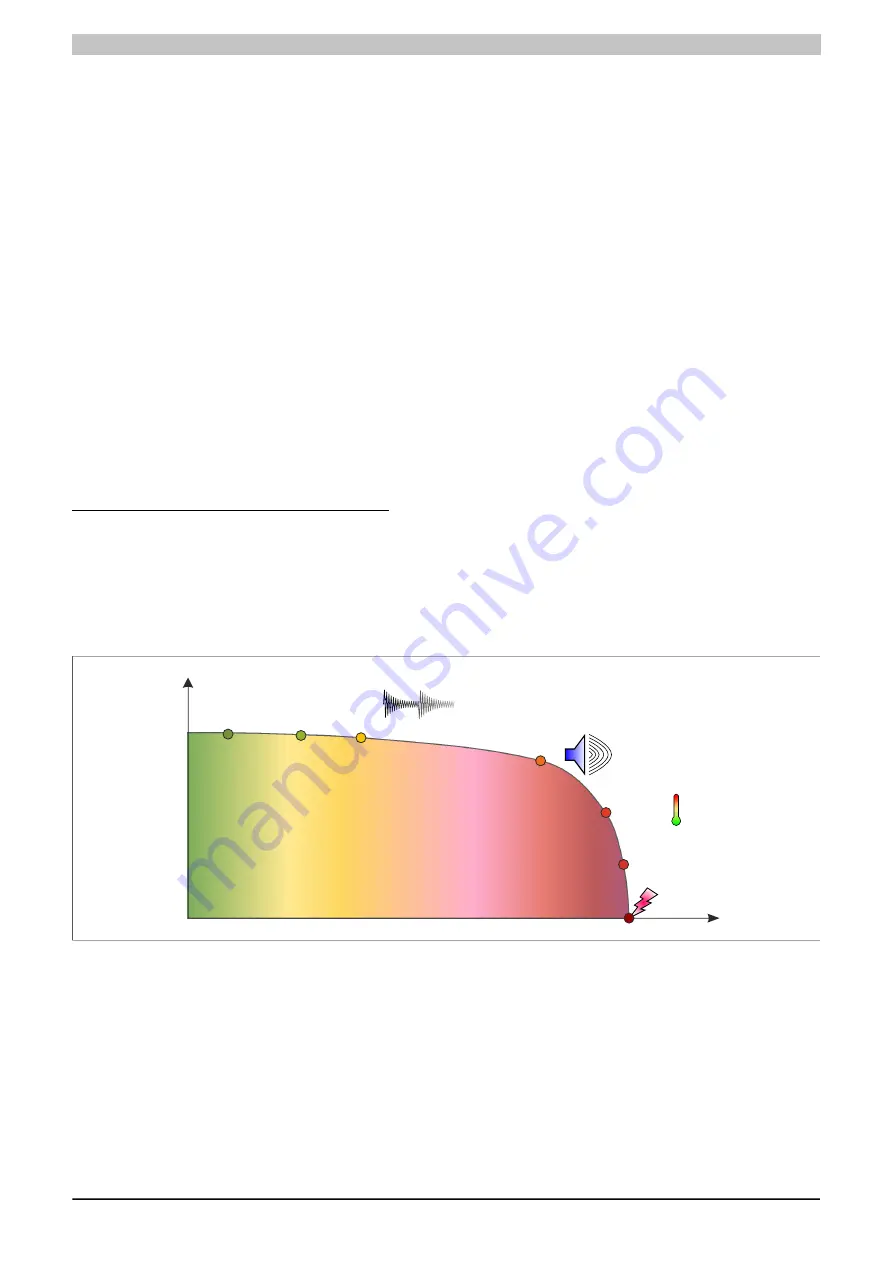
X20 system modules • Other functions • X20CM4810
2078
X20 system User's Manual 3.10
Each component is subject to the regularities of this curve, with a typical trend emerging as a result.
•
Area 1 (early failures)
is characterized by a decreasing failure rate. Early failures are caused almost ex-
clusively by errors in assembly or construction. Nevertheless, particular care and quality during manufac-
turing and initial operation significantly reduces the failure rate at the beginning. This area also explains
the increased failure performance after an intervention in a system that functions well.
•
During continuous operation in
Area 2 (chance failures)
, the failure rate is almost consistent. These
chance failures are fundamentally difficult to ascertain and, most importantly, not easily influenced. Oper-
ating and maintenance errors contribute towards an increase in the failure rate in this region.
•
The failure rate increases dramatically in
Area 3 (wear and failure due to fatigue)
. Wear and fatigue
failures are primarily characterized by damage that progresses slowly over time.
The trend provides valuable information about the failure probability of the parameters measured by condition
monitoring. This usually behaves like the bathtub curve, i.e. an increase in the characteristic value signifies a
change in the system. The characteristic values can be synchronized with the operating parameters through the
integration of automation technology. Assessing curve performance and incorporating operating parameters makes
it possible to identify the best time to perform service work depending on condition.
In addition, oscillations are often representative of the condition of a machine or component. They are a good
indication of wear or damage. One example of this is roller bearings. Surface damage (pitting) leads to increased
oscillations in the bearing housing, which can then be measured and analyzed. An increase in oscillations during
operation indicates damage and/or increased wear. By constantly observing this condition, deviations from normal
operation can be recognized immediately.
Damage development and the damage chain
Explaining damage development with a roller bearing example
The majority of bearing damage develops slowly and usually without being noticed. In many cases, it is only once
the damage is more advanced that irregular running and unusual operating noises indicate bearing damage. This
points to material fatigue, e.g. chipping or altered radial clearance through wear.
If the damage is so advanced that it can be detected without measuring equipment, spontaneous failures such as
blockages and breakage of the bearing housing components often occur.
St
at
us
O
K
Fi
rs
t t
an
gi
bl
e
su
rfa
ce
d
am
ag
e
Be
gi
nn
in
g
of
b
ea
rin
g
da
m
ag
e
D
am
ag
e
to
a
be
ar
in
g
el
em
en
t
Visible damage on the
bearing and bearing element
Critical failure-causing
damage to a bearing
Temperature
No
ise
de
ve
lop
me
nt
O
sc
illa
tio
n
ex
ci
ta
tio
n
Fi
rs
t p
ar
tic
le
C
ha
ng
e
in
co
nd
iti
on
Destruction
M
ac
hi
ne
p
er
fo
rm
an
ce
Time
Damage to the bearing seat on
the shaft or in the bearing box
Destruction of bearing,
blockage of the bearing
End of the
mission time
Figure 644: Illustration of the damage chain and the development of damage over time
The damage chain illustrated in the image above presents condition monitoring as an important tool in the condi-
tion-oriented operation and maintenance of a system.
It is possible to draw conclusions about the condition of the machine or its components from the parameters
recorded by the sensors. Deterioration of the condition of components or system parts becomes apparent through
the detection and observation of their condition, the consideration of the trend and, if necessary, through the detailed
analysis of the measurement data obtained. Based on this, targeted measures can be put in place for maintenance.
Condition monitoring is a suitable option under the following conditions:
•
Measurable parameters that correlate with a failure need to be identified and selected.
•
The failure cannot be prevented by redesign or altered usage.
•
Events lead to failures that occur randomly.
Summary of Contents for X20 System
Page 2: ......
















































